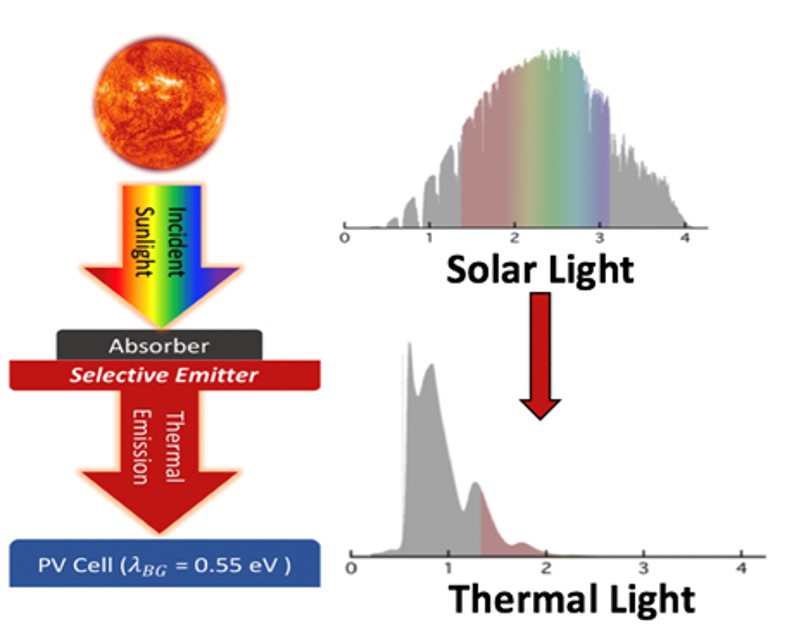The purpose of this project is to computationally design nanomaterials to control the flow of light and heat for energy applications.
Research Mentors
Jay Foley (CHEM) – Link to Foley Group Website
Description
Designing materials on the nanoscale can have a profound impact on how optical energy flows through those materials, which can in turn dramatically improve the performance of nanostructured materials for energy-related applications including solar and (solar)thermophotovoltaic energy conversion, radiative cooling, incandescent lighting, among others. Multilayer nanostructures represent an important class of materials with tunable optical and thermal radiative properties that can be leveraged for a wide range of energy applications. We have developed an open-source software package called WPTherml that couples rigorous electrodynamics computations to thermal radiation equations and aims to provide a powerful computational design engine for multilayer nanostructures for applications where control of optical and/or thermal radiation properties are paramount. This software tool will be used to explore novel energy applications, and to design materials that can advance those applications.
Figure 1. Reshaping the solar spectrum with spectrally-selective thermal emitters
REU Student’s Role
The students in the Foley lab will learn how to build models of nanostructured materials in the WPTherml platform, and how to use the package to quantitatively assess and optimize the performance of materials for energy applications such as passive radiative cooling. Students will also gain hands-on experience developing software in the Python programming language to add new features and capabilities to this package.

